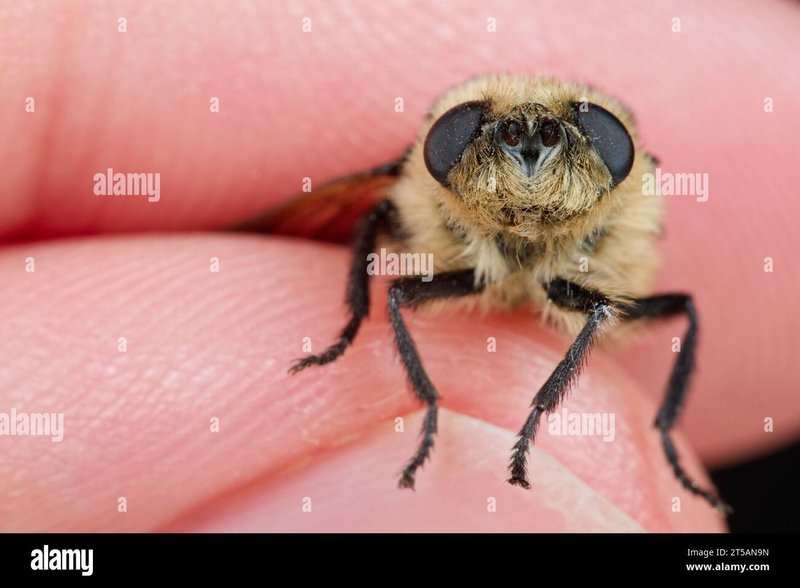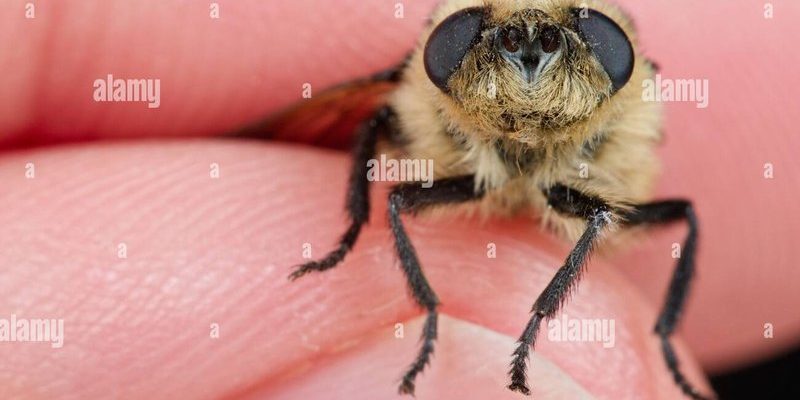
So, how do botflies zero in on their victims? It’s not like they’re flipping through a directory of potential hosts. Instead, they rely on a mix of environmental cues and biological signals. Let’s sip our coffee and dive into the fascinating world of botfly host detection, exploring the strategies they use to ensure their life cycle continues.
What Are Botflies and How Do They Work?
Before we get into the nitty-gritty of detection strategies, let’s quickly cover what botflies are. Botflies are part of the *Oestridae* family and are known for their unusual reproductive method. Adult female botflies capture other insects, often mosquitoes, and lay their eggs on these unsuspecting carriers. After the eggs hatch, the larvae enter the body of the host. Yikes, right?
The Dermatobia hominis species is especially notorious in Central and South America. They prefer mammals—humans included—as their hosts. Once inside, the larvae can survive and grow for weeks. It’s not a pleasant experience, but understanding their hosting behavior can help us make sense of how they find their way to their unsuspecting hosts.
Understanding Host Selection
You might be wondering how these little critters choose their hosts. Host selection by botflies is influenced by various ecological and biological factors. Here’s the thing: they don’t just pick anyone; they look for specific attributes in potential hosts.
Factors influencing host selection include:
- Body Temperature: Botflies are attracted to warm-blooded animals, as their body heat signals vitality and readiness for the larvae.
- Carbon Dioxide Emission: Just like a steak on a grill beckons hungry diners, mammals exhale carbon dioxide, indicating their presence to the botfly.
- Movement Patterns: Botflies often target hosts engaged in activities that disrupt their surroundings, making them more noticeable to the flies.
In forest environments, where hosts are abundant, these factors become crucial for the botfly’s survival. They’ve mastered the art of detection, ensuring they find the right host while avoiding competition and environmental hazards.
Environmental Cues that Attract Botflies
Forests are rich in biodiversity, which creates a dynamic environment for botflies. Many factors within these ecosystems can attract them to potential hosts. Let’s break down a few key environmental cues that help botflies in their quest.
Odors play a significant role. Botflies can detect the unique scents of mammals through pheromones and other chemical signals. Forest environments often have a mixture of scents, but certain animals produce stronger odors that can act like a beacon for a botfly.
Another critical cue is sight. When mammals move through the underbrush, their motion can draw attention. Botflies are visual hunters, and their ability to spot movement helps them target the right host from afar.
Lastly, habitat preference cannot be overlooked. Botflies thrive in humid, dense forest areas where mammals are likely to roam. They prefer areas with thick vegetation, as this is where their potential hosts are feeding, nesting, or seeking shelter.
Behavioral Adaptations of Botflies
Botflies exhibit fascinating behavioral adaptations that enhance their chances of finding a host. One of the most intriguing is their ability to time their activities based on environmental conditions.
For instance, during warmer months or rainy seasons, the number of mammals—like cows or deer—increases, creating a buffet for botflies. Interestingly, these flies tend to be more active during the day when many of these mammals are out and about, feeding or mating.
Moreover, botflies use specific flight patterns to improve their chances of landing on a host. They often fly low and erratically, mimicking the movements of insects. This technique makes them less visible to both predators and potential hosts, increasing the likelihood of a successful landing.
Monitoring Botfly Activity in Forests
For researchers and wildlife enthusiasts, monitoring botfly activity is crucial for understanding their behavior and how they interact with their environment. There are several methods to keep an eye on these elusive insects.
One common technique involves using bait traps. These traps are designed to lure adult botflies using specific attractants, like scents or visual cues. Once caught, researchers can study their numbers and behavior in real-time.
Another approach is employing camera traps. By setting up motion-sensitive cameras in known botfly habitats, researchers can capture images of botflies and their interactions with potential hosts. This non-invasive method provides valuable insights into their lifecycle and habitat preferences.
Finally, field surveys can be conducted, where scientists explore different forest areas and document the presence of botflies. This helps build a broader picture of their distribution and behavior across various environments.
Impact of Botflies on Ecosystems
Botflies play a significant role in forest ecosystems. While their larvae can cause discomfort to their hosts, they also contribute to the ecological balance through their presence. Their interactions with other species, particularly in terms of host selection, influence wildlife populations and health.
However, it’s essential to be aware of the potential negative impacts. When botflies infest a host, it may lead to health complications, stressing the host animal. This stress can affect survival rates and overall population dynamics. Consequently, understanding botfly detection strategies can provide insights into managing wildlife populations and ensuring ecosystem stability.
Preventative Measures Against Botfly Infestation
If you’re venturing into forested areas, you might be concerned about botflies. While it’s impossible to completely avoid them, there are some steps you can take to minimize the risk of infestation.
- Insect Repellent: Use a strong insect repellent on your skin and clothing to help ward off botflies and other biting insects.
- Protective Clothing: Wear long sleeves and pants to create a barrier that can help keep flies at bay.
- Avoid Dense Vegetation: Stick to well-trodden paths and avoid areas with thick underbrush, where botflies are more likely to lurk.
By taking these precautions, you can enjoy your time in the great outdoors while minimizing the risk of encountering these pesky pests.
In conclusion, understanding botfly host detection strategies in forest environments brings us closer to appreciating the intricate balance of nature. These tiny insects, while unsettling, play a significant role in their ecosystems. Whether you’re a wildlife researcher or a curious adventurer, keeping an eye on these fascinating creatures can lead to a deeper understanding of the interconnectedness of life in our forests. So next time you step into a forest, take a moment to consider the hidden dramas unfolding around you—like the botflies on their relentless search for a host.

